
Achieving certification in emergency management is a crucial step for professionals seeking to enhance their skills and contribute to disaster response efforts. This process involves understanding various key principles that ensure effective communication, coordination, and response during critical situations. A well-rounded preparation plan can make all the difference in passing the required assessments and becoming a certified expert in this field.
In this guide, we will explore the fundamental topics and strategies that will help you navigate the preparation process with confidence. By focusing on the core concepts and applying the right study techniques, you will be equipped to tackle the most common questions and scenarios presented in the certification tests. Understanding the structure of the material and practicing consistently are essential for success.
Effective study habits and a solid grasp of the subject matter are key components to mastering the certification content. Whether you’re just starting or looking for tips to refine your knowledge, this resource will support your journey toward achieving certification and advancing your career in emergency management.
Understanding the FEMA IS-100.C Exam
In the realm of emergency management, gaining a solid understanding of the foundational concepts is essential. The certification process is designed to test your knowledge on key principles of response coordination, communication strategies, and overall disaster management frameworks. To succeed, it is crucial to familiarize yourself with the structure and expectations of the evaluation.
This assessment focuses on core areas of preparedness, response, and recovery within the context of national and local emergencies. It is structured to gauge your ability to apply theoretical knowledge in real-world scenarios. To pass, candidates need to demonstrate proficiency in several areas:
- Incident Command System (ICS): Understanding how to manage and organize resources effectively during an emergency response.
- Roles and Responsibilities: Knowing the specific duties of various stakeholders involved in crisis management.
- Coordination and Communication: Ensuring all parties are aligned and informed to avoid confusion during critical moments.
- Resource Management: Identifying the best practices for allocating, tracking, and utilizing resources in an emergency situation.
By reviewing these core topics, candidates can better prepare for the types of questions and situations they will encounter during the assessment. The test is designed to ensure that those who pass have a comprehensive understanding of emergency management protocols and can effectively apply them when necessary.
To maximize your chances of success, it’s important to not only study the key principles but also practice with realistic scenarios. This will help you develop a deeper grasp of how to approach different challenges in a disaster management environment. With the right preparation, you will be ready to meet the certification requirements with confidence.
What You Need to Know About IS-100.C
Preparing for an emergency management certification requires an understanding of the key principles and practices that will be tested. This certification focuses on essential strategies for responding to and managing critical incidents, with an emphasis on communication, coordination, and resource management. To successfully complete the process, you need to be familiar with the specific components and structure of the material being covered.
Key Topics in the Certification
The evaluation is divided into several distinct areas, each designed to assess your knowledge and ability to apply emergency management strategies effectively. The following table highlights the key topics that are covered during the preparation process:
| Topic | Description |
|---|---|
| Incident Command System | Understanding the organization and structure for managing resources during an emergency response. |
| Roles and Responsibilities | Knowledge of the duties and functions of each participant in the disaster management process. |
| Communication Procedures | Establishing clear communication channels for effective coordination among responders. |
| Resource Management | Allocating, tracking, and utilizing resources during an emergency to ensure efficient response. |
How to Approach the Preparation
To prepare effectively, you need to review each of these topics and understand their practical application in real-world scenarios. Focus on mastering the principles behind each area, as this will enable you to answer questions that challenge your ability to think critically and apply the material. Practice using case studies, review sample questions, and take mock tests to ensure you are ready for the assessment.
With the right preparation, you will be equipped to confidently approach the certification and demonstrate your expertise in managing critical situations.
Key Concepts Covered in IS-100.C
Understanding the fundamental principles of emergency management is essential for success in certification assessments. The core concepts focus on the strategic elements required to effectively manage and respond to crises. These include communication, coordination, resource allocation, and structured management systems that ensure a smooth and efficient response during critical incidents.
To achieve a comprehensive understanding, it’s important to grasp the following key concepts, which will be assessed during the certification process:
- Incident Command System (ICS): A standardized approach to organizing and managing resources, personnel, and operations during emergencies.
- Roles and Responsibilities: Knowing the duties of each team member and how their actions contribute to the overall success of the response effort.
- Communication Protocols: Establishing clear, consistent communication channels between all responding parties to ensure accurate information flow.
- Resource Management: The ability to effectively allocate and track resources to meet the demands of an emergency situation.
- Coordination and Collaboration: Working seamlessly with various organizations and agencies to ensure all efforts are aligned towards a common goal.
By mastering these concepts, candidates will be well-prepared to handle various emergency scenarios and apply the right strategies to manage crises efficiently. It is essential to not only understand these principles in theory but also to practice applying them through realistic exercises and simulations.
How to Approach FEMA IS-100.C Questions
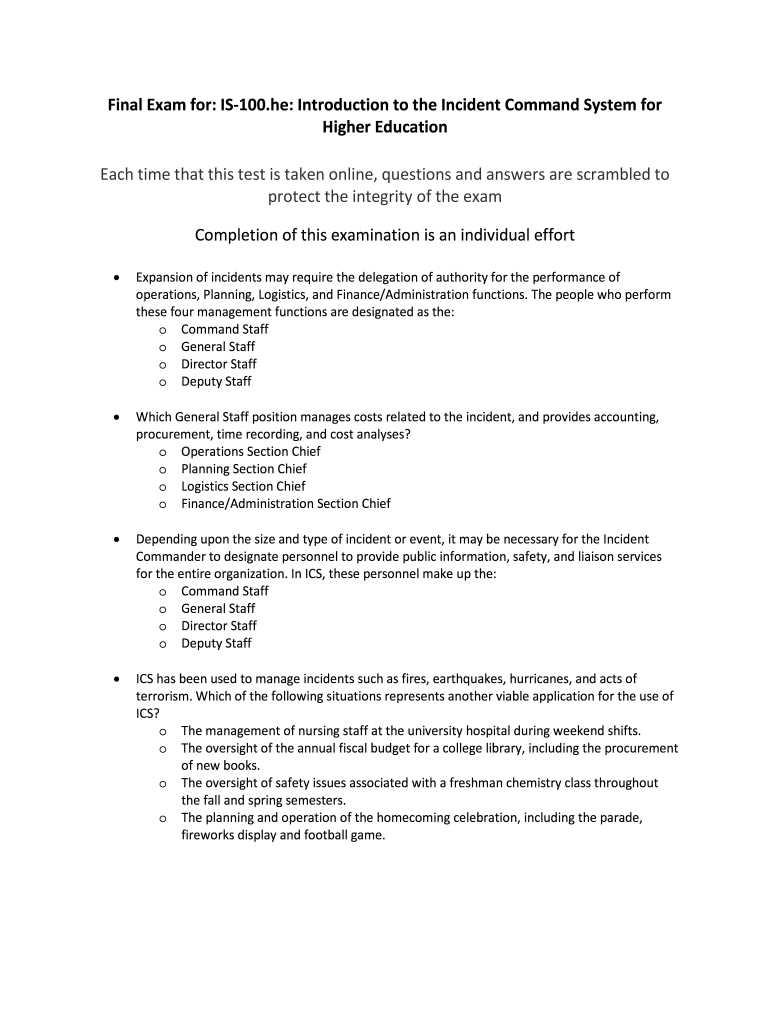
When preparing for the certification assessment in emergency management, understanding how to effectively tackle the questions is just as important as mastering the content. The ability to analyze and respond to different scenarios is key to demonstrating your readiness. Properly approaching the questions will ensure you are able to apply your knowledge and make informed decisions during the evaluation.
Familiarize Yourself with the Question Format
Before diving into the test, it’s essential to understand the typical structure of the questions. The assessment often includes multiple-choice questions that assess your knowledge of concepts, roles, and procedures. These questions are designed to evaluate your ability to apply theory to real-world situations, so it is crucial to focus on:
- Key Concepts: Focus on the main principles such as incident management systems, communication strategies, and resource allocation.
- Scenario-Based Questions: These test your ability to make decisions based on given emergency situations.
- Process and Procedures: Ensure that you are familiar with the step-by-step processes used in crisis response and management.
Effective Strategies for Answering Questions
While answering the questions, it’s important to stay focused and apply a logical approach. Here are some tips to help you:
- Read Each Question Carefully: Take time to understand what is being asked before selecting your answer. Pay attention to key phrases that highlight the most important details.
- Eliminate Clearly Incorrect Answers: Narrow down your choices by ruling out the obviously wrong options, increasing your chances of selecting the correct answer.
- Consider the Context: Many questions are scenario-based, so it is important to apply the concepts you’ve learned to real-life situations.
- Don’t Overthink: Stick to what you know and avoid second-guessing your initial choice unless you find clear evidence to support another answer.
By mastering these strategies and staying calm, you can confidently approach the questions and demonstrate your understanding of emergency management principles.
Important Terms in IS-100.C Exam
In order to successfully navigate the certification process for emergency management, it is essential to become familiar with the key terms and definitions that are often tested. Understanding these terms will provide a solid foundation for grasping the broader concepts and applying them in real-world situations. These fundamental terms are crucial for effective communication and coordination during crisis management.
Here are some of the most important terms to master when preparing for the assessment:
- Incident Command System (ICS): A standardized structure used to manage emergency responses, ensuring clear roles and responsibilities for all involved parties.
- Unified Command: A coordination structure where multiple agencies work together in managing a response, particularly in large-scale emergencies.
- Mutual Aid: Agreements between organizations or agencies to provide assistance to each other during emergencies, ensuring efficient resource sharing.
- Command Post: The location where key personnel coordinate and manage the response efforts, including communication and decision-making.
- Situation Report (SITREP): A document or update that provides current information on the status of an emergency situation, including resources and operations.
- Resource Typing: The process of categorizing resources (personnel, equipment, supplies) based on their capabilities to ensure appropriate deployment during emergencies.
- Chain of Command: A hierarchical structure that defines the flow of authority and decision-making during a crisis response.
Mastering these key terms will not only enhance your ability to answer questions but also deepen your understanding of how different components of emergency management work together to achieve a coordinated and effective response. These terms form the backbone of the language used in the field and are essential for anyone aiming to excel in the certification process.
Study Tips for IS-100.C Exam Success
Achieving success in the certification process for emergency management requires more than just understanding key concepts. It involves adopting effective study strategies that will help you retain information, apply it in real-world scenarios, and confidently approach the assessment. With the right study plan, you can increase your chances of success and ensure that you’re fully prepared for the challenge ahead.
Here are some practical study tips that will help you succeed:
| Tip | Explanation |
|---|---|
| Start Early | Begin your preparation well in advance to avoid cramming. Spacing out study sessions allows you to absorb and retain the material more effectively. |
| Break Down the Material | Divide the topics into manageable sections and focus on mastering one concept at a time. This helps prevent feeling overwhelmed. |
| Use Practice Tests | Simulate test conditions by taking practice quizzes. This helps you familiarize yourself with the question format and identify areas where you need further review. |
| Review Real-Life Scenarios | Study case studies or real-life situations to understand how the principles you are learning are applied in actual emergencies. |
| Study with Others | Join a study group or discuss the material with peers. Collaborating with others can help reinforce your understanding and clarify any confusing concepts. |
| Stay Consistent | Consistency is key. Set a study schedule and stick to it, ensuring that you dedicate time each day or week to review the material. |
By following these study tips and remaining disciplined in your preparation, you will be well-equipped to pass the certification and demonstrate your expertise in emergency management. Remember, success is built on consistent effort, practice, and understanding how to apply what you’ve learned effectively in a crisis environment.
How to Access FEMA IS-100.C Resources
Accessing the right resources is a crucial part of preparing for the certification in emergency management. These materials not only help you understand the essential concepts but also provide the tools you need to study efficiently. From official guides to online courses, there are various ways to gather the necessary information and practice for the assessment.
Official Websites and Online Portals
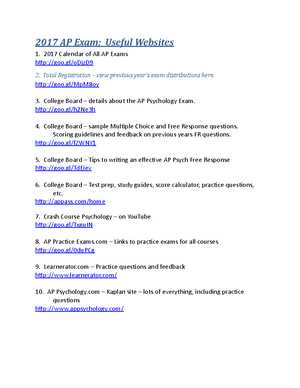
The most reliable sources of information are official websites and online portals that offer access to study materials, including free resources and downloadable guides. Here are some useful platforms:
- Federal Emergency Management Agency (FEMA) Website: The official website offers a wealth of materials, including training resources, manuals, and detailed course outlines. You can find valuable study materials and course registration options.
- National Response Framework (NRF): This framework provides essential documents related to disaster response, which can help reinforce your knowledge of coordination and emergency operations.
- Training Portals: Many government agencies and organizations offer specialized training portals where you can access course modules, quizzes, and study guides designed to help you prepare.
Additional Learning Tools
In addition to official sources, there are various supplementary resources that can enhance your preparation:
- Practice Exams: Online practice tests are available on multiple platforms and provide a way to simulate the test environment. They help familiarize you with the question format and timing.
- Study Groups and Forums: Connecting with others who are also preparing for the assessment can provide additional insights and help clarify challenging topics. Online discussion forums and social media groups are great for sharing tips and asking questions.
- Books and Study Guides: Comprehensive study guides available in bookstores or online can offer a structured approach to learning. Many of these guides include practice questions and detailed explanations of key topics.
By exploring these resources, you can build a strong foundation of knowledge and ensure you are well-prepared for the certification. Taking advantage of all available tools will not only help you understand the core concepts but also improve your ability to apply them in real-world scenarios.
Common Mistakes to Avoid in IS-100.C
When preparing for a certification in emergency management, it is easy to fall into common traps that can hinder your success. Understanding these mistakes and how to avoid them will give you a significant advantage during your preparation and ensure that you’re better equipped for the assessment. By recognizing these pitfalls, you can approach your study with greater focus and confidence.
Here are some of the most common mistakes to watch out for:
- Neglecting the Fundamentals: Focusing only on advanced concepts while neglecting the basic principles can lead to gaps in your understanding. Ensure that you grasp the foundational knowledge before moving on to more complex topics.
- Relying Too Much on Memorization: While memorizing key terms and facts can be helpful, it is equally important to understand how to apply these concepts in practical scenarios. Focus on comprehension and application, rather than just rote memorization.
- Skipping Practice Tests: Many candidates avoid taking practice tests because they feel they aren’t necessary. However, these tests are critical for familiarizing yourself with the format and timing of the assessment. Skipping them means missing out on valuable experience.
- Overlooking Scenario-Based Questions: A major component of the assessment involves scenario-based questions, which require you to think critically and apply knowledge in real-life contexts. Avoid solely focusing on theoretical concepts and ensure that you understand how to approach these types of questions.
- Procrastinating or Cramming: Leaving your study until the last minute is a surefire way to undermine your efforts. Effective preparation requires a consistent study schedule. Cramming the night before is rarely effective and can lead to unnecessary stress.
- Ignoring Official Resources: Relying solely on third-party study guides or online forums without consulting official materials can leave you unprepared. Always prioritize authoritative resources to ensure you’re studying the most up-to-date and relevant content.
- Not Reviewing Mistakes: Simply moving on from a mistake without understanding why it happened can impede your progress. After practice tests or study sessions, take the time to review your errors to ensure you don’t repeat them.
By staying mindful of these common mistakes and taking steps to avoid them, you’ll be able to focus your efforts on what matters most: understanding key concepts, applying them in context, and building the confidence needed for success.
Preparing for IS-100.C with Practice Tests
One of the most effective ways to prepare for any certification related to emergency management is through practice tests. These tests provide a simulation of the actual assessment environment and help you become familiar with the format and types of questions you will encounter. By regularly practicing, you can build confidence, identify areas of weakness, and improve your time management skills.
Benefits of Practice Tests
Practice tests offer numerous advantages that enhance your preparation process:
- Familiarity with Question Formats: Practice tests often mirror the format and structure of the real test, allowing you to become accustomed to the types of questions and answer choices.
- Improved Time Management: Taking practice tests helps you develop a sense of timing, ensuring you are able to complete all questions within the given time limit.
- Identify Weak Areas: Practice tests highlight the topics or concepts you may not fully understand, giving you the opportunity to review and strengthen your knowledge in those areas.
- Build Confidence: The more you practice, the more confident you become. Success in practice tests boosts your self-assurance and reduces test anxiety.
How to Use Practice Tests Effectively
To maximize the benefits of practice tests, it’s important to use them strategically:
- Start Early: Begin taking practice tests early in your study process to assess your baseline knowledge. This will help you see which areas need more focus.
- Simulate Real Test Conditions: When taking a practice test, try to simulate the conditions of the actual assessment. Set a timer, avoid distractions, and complete the test in one sitting.
- Review Your Mistakes: After each practice test, carefully review your incorrect answers. Understanding why you made a mistake will help you avoid it in the future and deepen your understanding of the material.
- Take Multiple Tests: Repeated practice is key. Taking multiple practice tests allows you to track your progress and further refine your skills.
Incorporating practice tests into your study plan will enhance your ability to approach the assessment with confidence and competence. By consistently practicing, you’ll improve your knowledge retention and performance, ultimately increasing your chances of success.
Strategies to Master IS-100.C Topics
Mastering the key concepts in any emergency management certification requires a strategic approach. Whether you’re aiming to deepen your understanding or ensure retention of essential knowledge, implementing effective study techniques can make a significant difference in your preparation. The following strategies are designed to help you efficiently cover complex topics and retain important information for the assessment.
Focused Study and Conceptual Understanding

Rather than attempting to memorize large amounts of information at once, it’s important to focus on truly understanding the core concepts. Here are some strategies to help with conceptual mastery:
- Break Topics into Manageable Sections: Divide each subject into smaller, more digestible units. Focusing on one section at a time makes it easier to retain information and reduces overwhelm.
- Relate Concepts to Real-World Situations: Applying the material to practical scenarios helps reinforce your learning and provides deeper insights into its relevance.
- Create Study Summaries: Summarizing the material in your own words ensures that you’ve understood it fully. This process also provides a quick reference for future reviews.
Active Learning and Review Techniques
Active learning techniques are crucial for improving retention and ensuring that the knowledge stays with you long term. Below are some of the most effective methods:
- Use Flashcards: Flashcards are great for reviewing definitions, key concepts, and terminology. Regularly testing yourself with flashcards helps reinforce memory.
- Teach What You Learn: One of the best ways to solidify knowledge is by teaching it to someone else. If you can explain a concept clearly, it shows that you truly understand it.
- Review Regularly: Instead of cramming, schedule regular review sessions to revisit key topics. Spacing out your reviews will help maintain retention over time.
By using these strategies consistently, you will be able to master the necessary material efficiently and with a deeper understanding, preparing you for a successful outcome in your certification process.
How Long It Takes to Pass IS-100.C
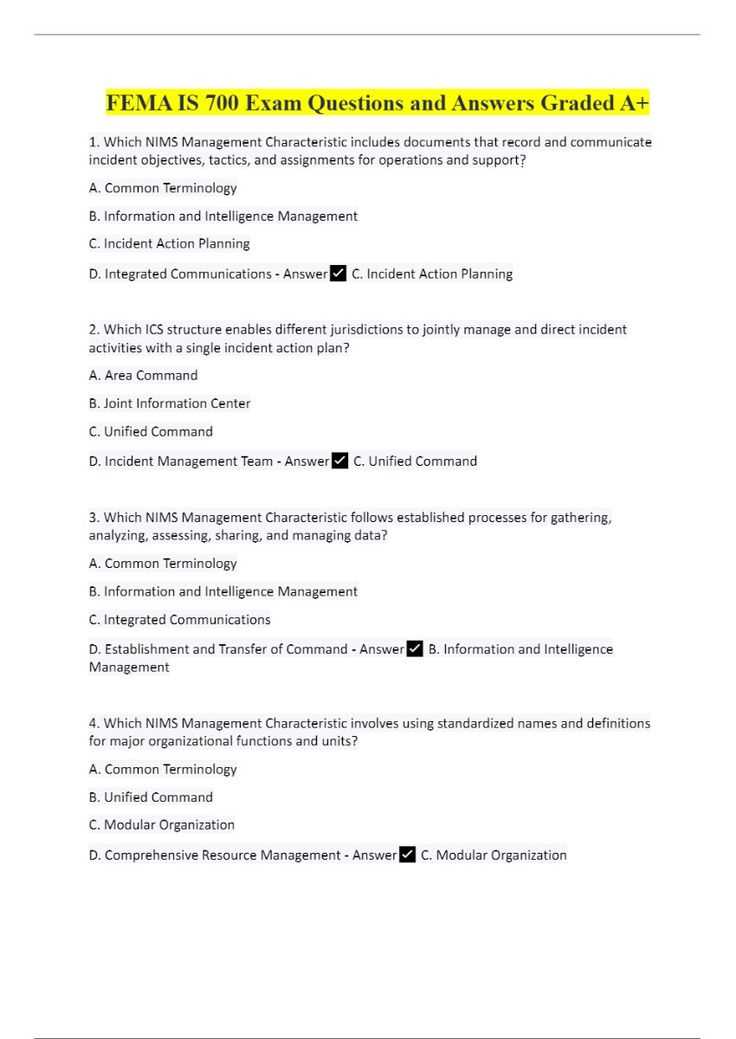
Preparing for a certification related to emergency management can vary greatly in terms of time commitment. The length of time it takes to successfully complete the preparation process depends on several factors, including your current knowledge, the amount of time you can dedicate to studying, and how effectively you use your resources. It’s important to set realistic expectations and create a structured study plan that fits your personal schedule and goals.
Factors Affecting Preparation Time
The time required to master the material and perform well in the assessment can vary for different individuals. Consider these key factors when estimating your preparation timeline:
- Prior Knowledge: If you already have a background in emergency management or related fields, you may require less time to familiarize yourself with the content.
- Study Hours: The more time you can commit to studying each day or week, the quicker you will cover the material. Setting aside a consistent study schedule helps you stay on track.
- Learning Style: Active learning strategies, such as taking practice tests and engaging with the material through various methods (e.g., reading, flashcards, discussions), can speed up your comprehension and retention.
- Review and Practice: Regular review sessions and practice tests play a crucial role in reinforcing concepts and improving your readiness, ultimately shortening the time it takes to feel confident about the content.
Typical Preparation Timeframe
On average, most individuals spend between 2 to 6 weeks preparing for a certification in this field. This estimate assumes consistent study hours, ranging from 5 to 10 hours per week. However, for those new to the subject, a longer preparation period may be necessary. Here’s a rough guide based on study habits:
- Beginner (no prior experience): 6-8 weeks of dedicated study, with regular review and practice sessions.
- Intermediate (some familiarity with the subject): 4-6 weeks, with a focus on reviewing specific areas of weakness.
- Advanced (strong background in related topics): 2-4 weeks, mainly for review and taking practice tests.
Ultimately, the key to success is consistency and persistence. By allocating time wisely, focusing on key areas, and using a variety of study methods, you can set yourself up for success within a reasonable timeframe.
Understanding FEMA IS-100.C Requirements
In order to succeed in obtaining a certification related to emergency response, it’s essential to first understand the prerequisites and expectations involved. These requirements ensure that participants are prepared for the challenges of the field, with a comprehensive grasp of the necessary skills and knowledge. Meeting these criteria will not only prepare you for the assessment itself but also equip you with the foundation needed for effective performance in real-world situations.
Key Prerequisites for Participation
Before diving into the study process, it’s important to be aware of the basic prerequisites for participating in the program. While the specifics may vary based on individual circumstances, the following are commonly required:
- Basic Educational Background: While there are no strict educational requirements, having a background in public safety, emergency management, or a related field can be beneficial.
- Previous Experience: Some familiarity with emergency procedures or a basic understanding of disaster response protocols may be helpful.
- Technical Equipment: Access to a computer with reliable internet is necessary for completing the online modules and assessments.
- Commitment to Time: Participants must be able to dedicate sufficient time to both studying the course material and completing any required assessments.
Course Content and Learning Goals
To succeed, participants need to understand the key topics covered in the course. While each learning module focuses on different aspects of emergency management, the core learning objectives generally include:
- Incident Command Structure: Gaining a thorough understanding of the organizational framework used during emergency response operations.
- Roles and Responsibilities: Learning about the different roles involved in disaster management, including key responsibilities for each role within the incident command system.
- Effective Communication: Understanding the importance of clear and effective communication between various agencies during an emergency response.
- Resource Management: Learning how to manage and allocate resources efficiently during an incident to ensure a coordinated response.
By ensuring that you meet the necessary requirements and focusing on these learning goals, you will be well-equipped to not only pass the certification but also to apply the knowledge in practical emergency management scenarios.
Tips for Retaking the IS-100.C Exam
When preparing to retake a certification test related to emergency management, it’s important to reassess your approach to ensure success. While setbacks can be discouraging, they offer a valuable opportunity to refine your knowledge and improve your performance. By implementing targeted strategies, you can address areas of weakness, strengthen your understanding, and approach the retake with greater confidence.
Review Your Previous Results
Start by carefully reviewing the results from your previous attempt. Identifying the sections where you struggled the most will help you prioritize areas that need more focus. Pay attention to the questions you answered incorrectly and understand why those mistakes were made.
- Focus on Incorrect Answers: Revisit the questions that you got wrong and break down the reasoning behind each incorrect response.
- Analyze Patterns: Look for patterns in the types of questions you missed–are they focused on certain topics or concepts?
- Understand the Correct Explanation: Once you’ve identified where you went wrong, study the correct answers and learn the rationale behind them.
Effective Study Techniques
As you prepare for your second attempt, adjusting your study routine can make a significant difference in your results. Here are some techniques to maximize your preparation:
- Active Learning: Engage in active learning techniques such as self-quizzing and teaching others, which can help reinforce your understanding.
- Practice Time Management: Simulate real testing conditions by timing yourself when practicing questions. This helps you manage your time more effectively on test day.
- Utilize Multiple Resources: Don’t rely on a single study guide. Use a variety of resources, such as online tutorials, practice tests, and textbooks, to broaden your knowledge base.
- Join Study Groups: Collaborating with others can provide different perspectives on challenging topics, which can help solidify your understanding.
Maintain a Positive Mindset
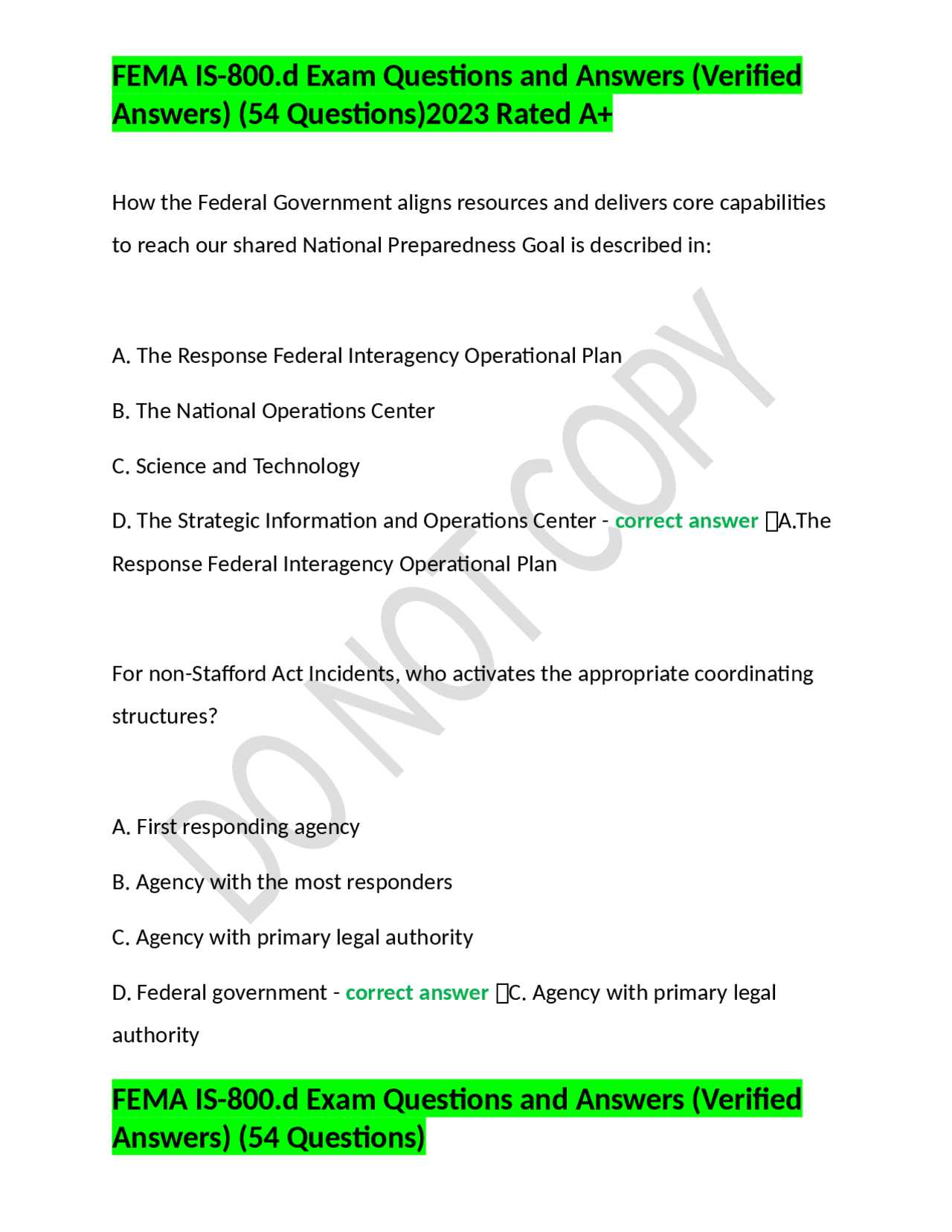
Finally, it’s crucial to stay positive and maintain a growth mindset. Instead of viewing the retake as a failure, think of it as an opportunity to improve and refine your skills. A confident mindset can reduce test anxiety and help you approach the material with a fresh perspective.
- Stay Persistent: Don’t let setbacks discourage you. Persistence and consistent effort will pay off.
- Visualize Success: Take time to mentally prepare by visualizing your success. Positive thinking can boost confidence and help you focus.
- Get Enough Rest: Ensure you’re well-rested before the test. A good night’s sleep can enhance memory retention and cognitive function during the test.
By following these tips, you can approach your second attempt with a well-rounded strategy and be better prepared to succeed.
How to Register for FEMA IS-100.C
Registering for a certification program in emergency management is a crucial first step toward gaining the skills and knowledge necessary to excel in this field. The registration process is straightforward, but understanding the necessary steps will help ensure a smooth experience. This section outlines the process, requirements, and helpful tips for successfully enrolling in the program.
Steps to Complete the Registration
The registration process for this certification involves a few essential steps. Below is a simple guide to walk you through the procedure:
- Create an Account: Before registering, you must create an account on the official portal of the organization offering the program. This will allow you to manage your course, track progress, and receive updates.
- Fill in Required Information: Provide necessary personal information, including contact details, qualifications, and experience if needed. This helps ensure that the program is tailored to your professional background.
- Choose Your Program: Select the specific program you wish to register for. Ensure you are registering for the correct course to avoid any confusion.
- Complete Payment: If there is any registration fee, complete the payment process using the available methods. Most programs accept credit cards, debit cards, or online payment systems.
Common Registration Issues and How to Avoid Them
Sometimes, individuals encounter challenges when registering for a certification program. Here are a few common issues and how to resolve them:
- Incorrect Details: Always double-check your personal and payment information before submitting the registration form to avoid delays.
- System Errors: If you encounter any technical issues, ensure your browser is up to date or try a different one. Contact customer support if problems persist.
- Missed Deadlines: Be aware of any registration deadlines. Late registrations may result in delayed access to course materials or difficulty securing a spot in the program.
Table of Key Registration Information
| Step | Description | Estimated Time |
|---|---|---|
| Create an Account | Set up a user profile on the registration portal | 5-10 minutes |
| Complete Registration Form | Fill out personal details, qualifications, and preferences | 15-20 minutes |
| Make Payment | Complete payment using the offered methods (if applicable) | 5 minutes |
| Confirm Registration | Review and confirm all details before final submission | 5 minutes |
Once the registration is complete, you will receive a confirmation email with additional information, including the start date of the program and access to course materials. With this process in mind, you will be well-prepared to begin your journey toward certification.
What Happens After Passing IS-100.C
After successfully completing a foundational certification in emergency management, several important steps follow. Once you’ve passed the required assessments, you will unlock various benefits that can help propel your career forward. The process does not end with simply receiving a certificate; it opens the door to further opportunities, recognition, and continuous learning.
Here’s a breakdown of what happens once you achieve this milestone:
Receiving Your Certification
Upon successfully meeting all the requirements, you will receive your certification. This serves as an official acknowledgment of your knowledge and readiness to take on roles in the field of emergency management. The certificate is often delivered electronically, and in some cases, you may receive a physical copy as well.
Enhanced Professional Opportunities
With the certification in hand, you can start exploring more advanced job opportunities. Many employers in emergency management, government agencies, and non-profits prioritize certified professionals. You can now apply for roles that require specific skills in planning, coordination, and disaster response.
Next Steps for Continued Learning
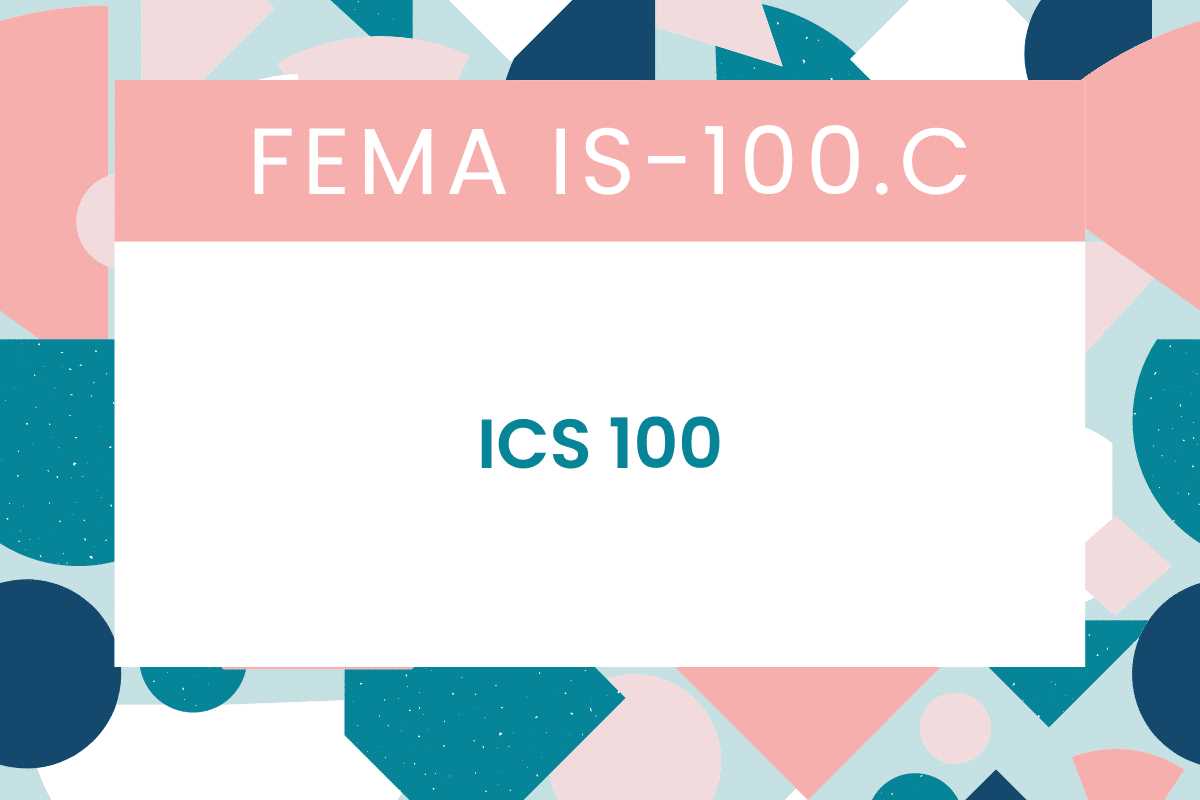
Passing the certification test is just the beginning. To stay relevant and advance your career, continuing education is key. There are several ways to further build your expertise:
- Enroll in Advanced Courses: After completing the basic certification, there are more specialized and advanced programs to explore. These can provide deeper insights into specific areas, such as incident management or crisis communication.
- Participate in Ongoing Training: Many professional networks and organizations offer regular training sessions, workshops, and webinars to keep your skills up to date.
- Stay Current with Industry Trends: Emergency management is a dynamic field. Reading recent reports, attending conferences, and joining industry associations will help you stay informed about new developments and best practices.
Networking and Community Engagement
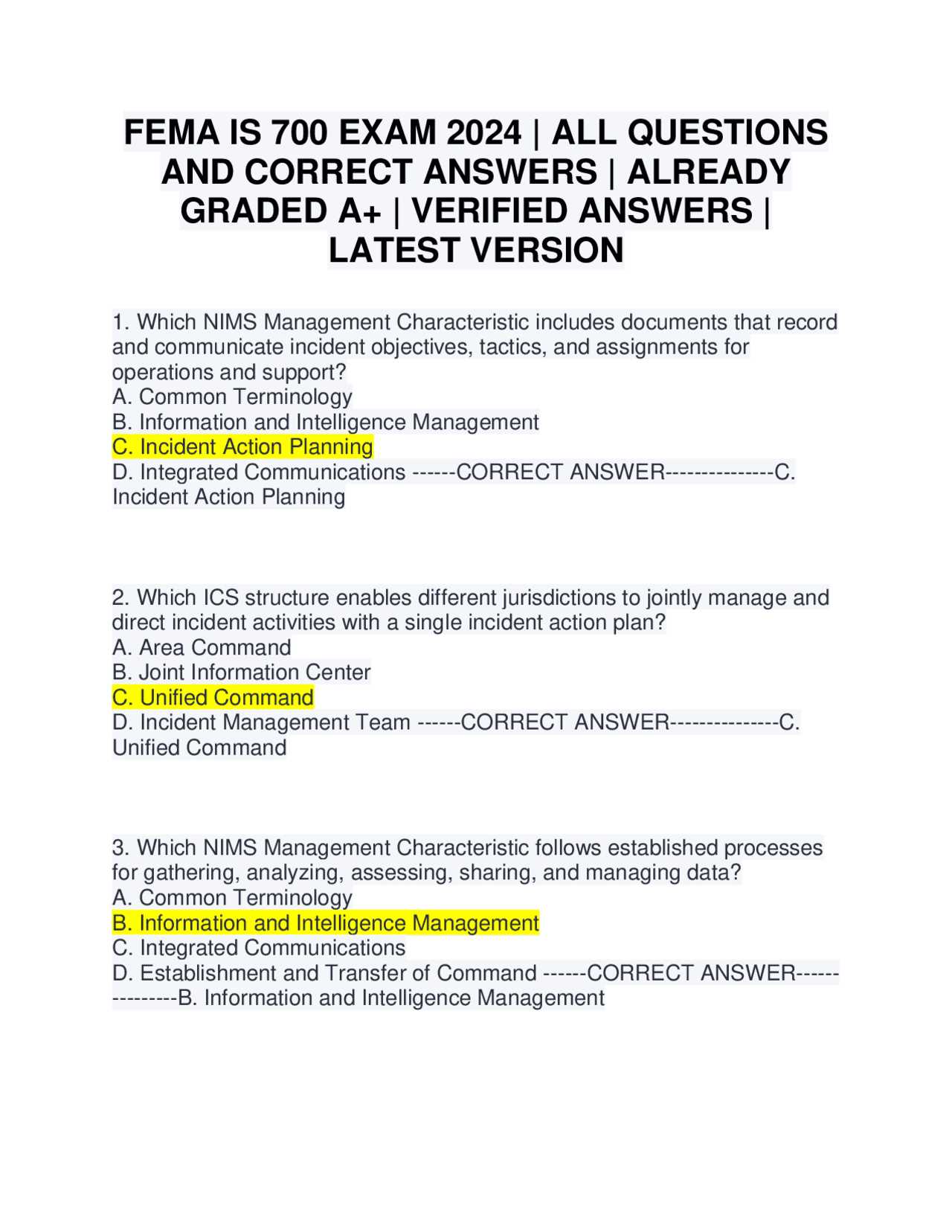
As a certified professional, you’ll gain access to a broader community of experts and peers. Networking is crucial for career growth and for staying connected with the latest trends in disaster management. Engaging in forums, attending events, and connecting with colleagues in your field can help you gain insights and establish important professional relationships.
In summary, passing the certification brings not only recognition but also a pathway to further growth, learning, and professional advancement. It is a critical milestone that signals your readiness to take on challenges and contribute effectively to the field of emergency management.
Top Resources for FEMA IS-100.C Preparation
Preparing for a foundational certification in emergency management requires a strategic approach, with the right resources playing a key role in success. Whether you’re just starting or looking to refine your knowledge, several materials can help you understand the core concepts and enhance your readiness. Utilizing a variety of tools will ensure you grasp essential topics and perform confidently on the assessment.
Here are some of the best resources to aid in your preparation:
Official Online Materials
The first and most reliable resource for preparation is the official study materials provided by relevant government agencies and organizations. These materials offer in-depth, up-to-date content directly aligned with the certification standards.
- Online Courses: Free and paid online courses provide structured learning paths, covering all major aspects of the certification. Many of these courses are self-paced and come with interactive lessons and quizzes.
- Study Guides: Official study guides are available, often containing comprehensive explanations, practice questions, and tips for understanding key topics.
- Webinars and Videos: Many training organizations offer recorded webinars or video tutorials, which break down complex concepts into digestible formats.
Books and Reference Guides
Books can be valuable companions during the preparation process. Numerous publications focus on the core concepts required for emergency management certification. These books provide detailed explanations and often include practice questions.
- Comprehensive Textbooks: Look for books written by experts in disaster response and crisis management, which provide both theoretical and practical knowledge.
- Practice Question Books: Specific question banks designed for this certification can help you get familiar with the type and format of questions you may face. These books often come with detailed explanations to guide you through the answers.
- Quick Reference Guides: If you’re short on time, pocket-sized reference guides and flashcards can be an effective way to review critical terms and concepts.
Practice Tests and Quizzes
Taking practice tests is one of the most effective ways to prepare. They help simulate the test environment and allow you to identify weak areas that need more attention.
- Mock Exams: Websites dedicated to emergency management often provide mock exams that closely mirror the structure and difficulty of the actual test.
- Online Quiz Platforms: Many platforms offer free or paid quizzes that focus on individual topics, such as incident response, crisis communication, or coordination efforts.
Community and Forums
Engaging with a community of like-minded individuals can be a great way to learn and stay motivated. Online forums and social media groups dedicated to emergency management can provide additional support.
- Discussion Groups: Participating in study groups allows you to share knowledge and clarify doubts with others who are also preparing for the same certification.
- Online Forums: Many websites and organizations host discussion forums where you can ask questions, share experiences, and get advice from those who have already passed the certification.
Using these resources in combination will provide a well-rounded approach to mastering the material and succeeding in the certification process. Whether you prefer structured courses or interactive practice questions, there’s a resource out there to match your learning style and goals.